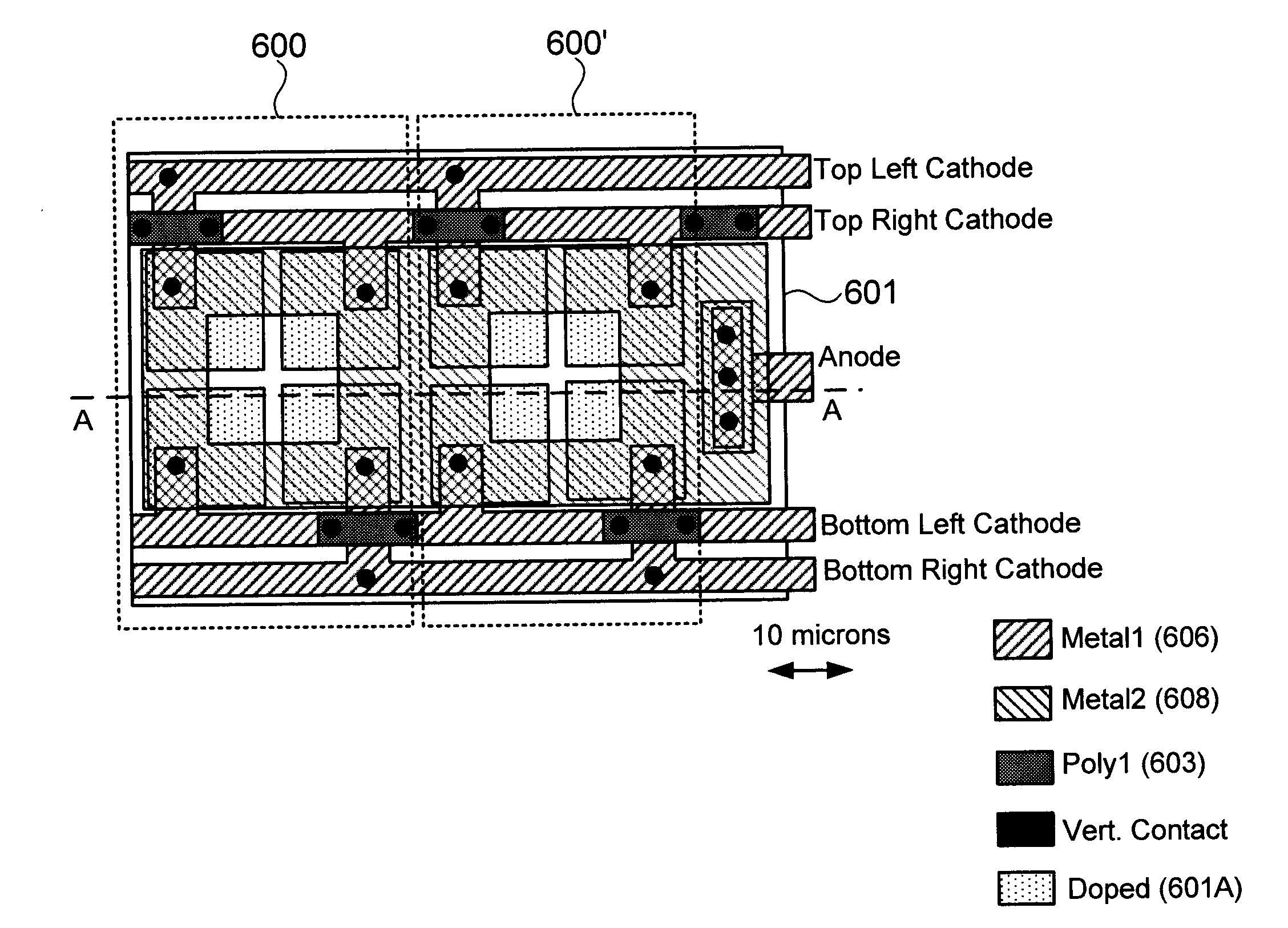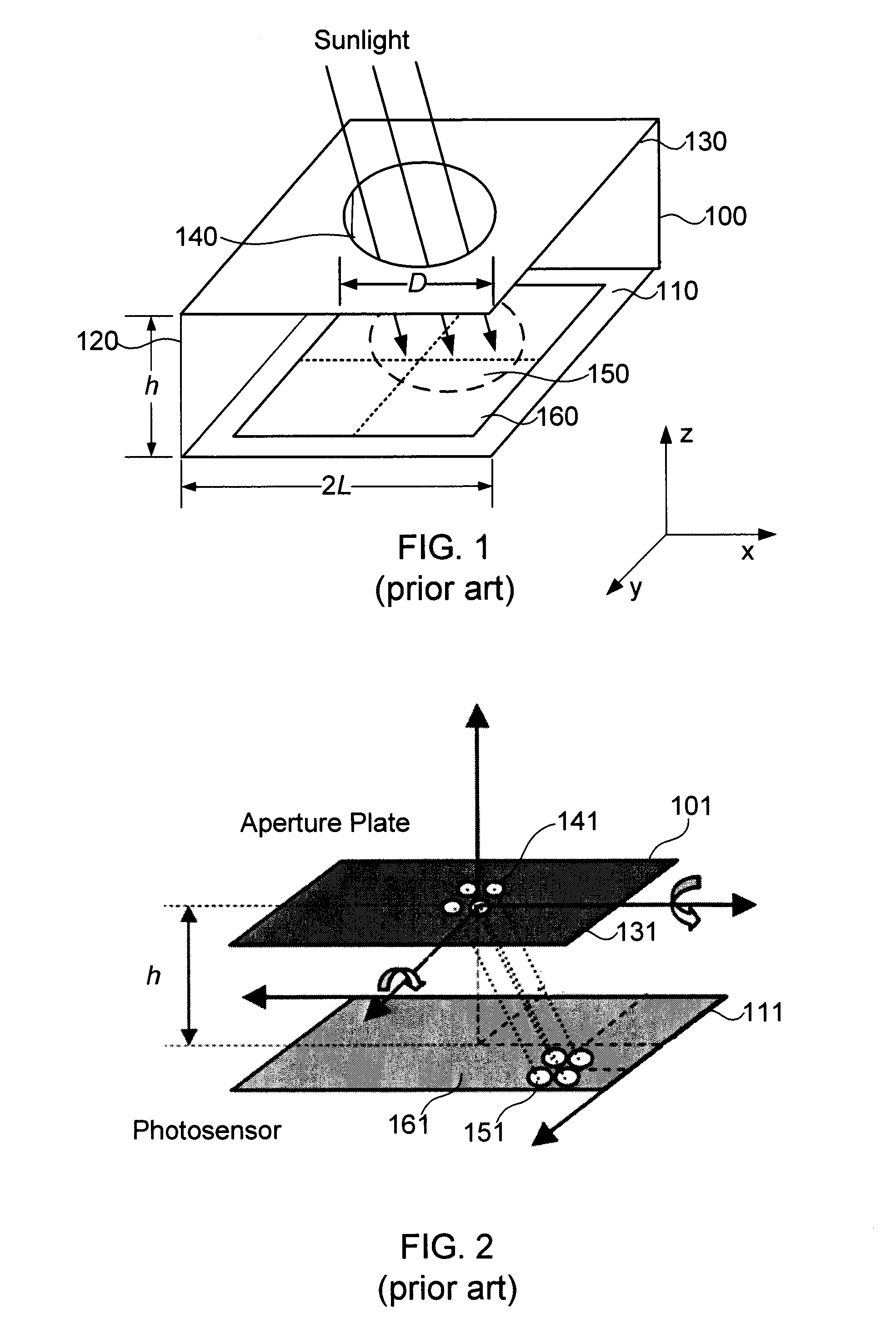Monolithic sun sensors, assemblies thereof, and methods of making and using same
a sun sensor and monolithic technology, applied in the field of sun sensors, can solve the problems of time-consuming mechanical coupling of components for each individual sun sensor, increased mass of sun sensor, and prone to alignment errors of mechanically coupled components, so as to improve the ease of manufacture, reduce the cost of manufacture, and improve the effect of siz
- Summary
- Abstract
- Description
- Claims
- Application Information
AI Technical Summary
Benefits of technology
Problems solved by technology
Method used
Image
Examples
Embodiment Construction
[0023]Embodiments of the present invention provide monolithic sun sensors, assemblies thereof, and methods of making and using same. By “monolithic sun sensor” it is meant a sun sensor in which all components are integrated into a unitary whole, rather than first being individually manufactured and subsequently mechanically coupled together. For example, the monolithic sun sensors provided herein may include a photosensor, a spacer material disposed over the photosensor, and a patterned mask that is disposed over the spacer material and defines an aperture over the photosensor. The thickness of the spacer material may define the distance between the photosensor and the patterned mask, in a manner analogous to that of mechanical spacer 120 described further above with reference to FIG. 1. However, rather than being separately produced and subsequently coupled to (and around) the photosensor, the spacer material provided herein instead may be deposited over the photosensor, thus obvia...
PUM
 Login to View More
Login to View More Abstract
Description
Claims
Application Information
 Login to View More
Login to View More - R&D
- Intellectual Property
- Life Sciences
- Materials
- Tech Scout
- Unparalleled Data Quality
- Higher Quality Content
- 60% Fewer Hallucinations
Browse by: Latest US Patents, China's latest patents, Technical Efficacy Thesaurus, Application Domain, Technology Topic, Popular Technical Reports.
© 2025 PatSnap. All rights reserved.Legal|Privacy policy|Modern Slavery Act Transparency Statement|Sitemap|About US| Contact US: help@patsnap.com



